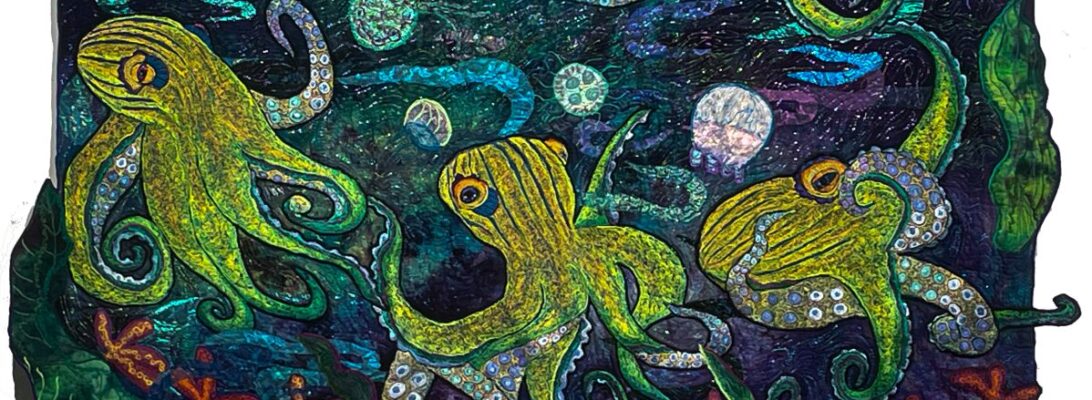
This is under the heading of sneaky secret tricks. I rarely use an applique foot for applique. Instead, I use my darning foot and cover the raw edge in a free-motion stitch.
Why? Mostly because I rarely use a straight edge in my work, except for borders. I’m a curvy girl and I think in terms of curves.

I wanted a curvy vine for my butterflies to fly over and for the flowers to nestle into. layered on another piece of green hand dye, stitched out my vine in a straight stitch, and cut away all the excess. It’s best to get rid of all the extra fabric you can. I use pelican scissors to trim as close as I can get to the seam. Pelican scissors have an odd bend that lets you cut right on the edge.

Then I picked a light, dark and medium set of threads for the edge. Vines have two sides, and one can be done light and the other dark. If it’s a complicated vine, it may take a wider range. You want colors that could be the same if they were in a darker or lighter environment.

Stitching the top and bottom line of the vine in different colors gives it a visual distinction that makes it look dimensional. And because it’s free motion, the line is fluid and follows the curve more graciously.

Here’s my piece, almost ready to back and bind. Free motion applique is just what a curvy girl ordered.































































